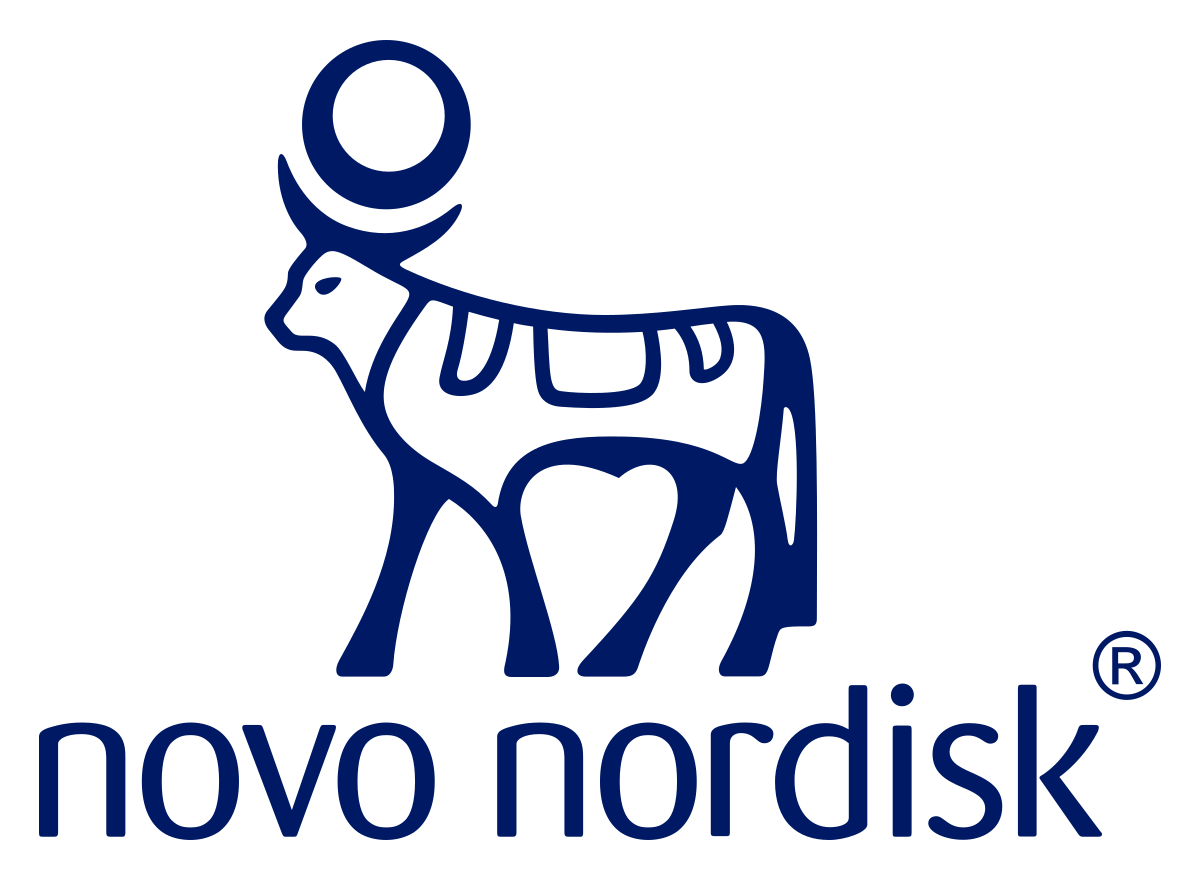预约演示
更新于:2025-06-25
Zalfermin
更新于:2025-06-25
概要
基本信息
原研机构 |
在研机构 |
非在研机构- |
权益机构- |
最高研发阶段临床2期 |
首次获批日期- |
最高研发阶段(中国)无进展 |
特殊审评- |
登录后查看时间轴
结构/序列
Sequence Code 10178574

来源: *****
关联
11
项与 Zalfermin 相关的临床试验NCT06409130
Effects of NNC0194-0499 Alone and in Combination With Semaglutide, of Semaglutide Alone, and of Cagrilintide Alone and in Combination With Semaglutide on Liver Damage and Alcohol Use in People With Alcohol-related Liver Disease
The study will look at the effects of NNC0194-0499, cagrilintide and semaglutide, on liver damage and alcohol use in participants with alcoholic liver disease. Participants will get NNC0194-0499, semaglutide, cagrilintide or ''dummy" medicine in different treatment combinations. Which treatment participants get is decided by chance. The study will last for about 39 weeks.
开始日期2024-05-20 |
申办/合作机构 |
NCT06188026
Investigation of the Effect of NNC0194-0499 on Pharmacokinetics of a Combined Oral Contraceptive (Ethinylestradiol and Levonorgestrel) in Females of Non-childbearing Potential. .
The study will investigate the influence of NNC0194-0499 on the blood levels of the two components of a birth control pill, Microgynon®. Participants will get the birth control pill in form of tablets in two periods of 8 days each.
Participants will get NNC0194-0499 as injection under the skin of their thigh. The injections will be given once weekly for 5 weeks.
The study will last for about 11 to 15 weeks, depending on the length of the screening period.
Participants will have to stay overnight at the study centre (2 nights and 4 nights, respectively) Only healthy women who are not able to bear children can take part in this study.
Participants will get NNC0194-0499 as injection under the skin of their thigh. The injections will be given once weekly for 5 weeks.
The study will last for about 11 to 15 weeks, depending on the length of the screening period.
Participants will have to stay overnight at the study centre (2 nights and 4 nights, respectively) Only healthy women who are not able to bear children can take part in this study.
开始日期2023-12-18 |
申办/合作机构 |
NCT05917938
Investigation of Pharmacokinetics, Safety and Tolerability of a Single Subcutaneous Dose of NNC0194-0499 in Participants With Various Degrees of Hepatic Impairment and Normal Hepatic Function
The study medicine NNC0194-0499 is under development for non-alcoholic fatty liver disease (NAFLD) including non-alcoholic steatohepatitis (NASH). All participants will receive a single dose of 30 milligram (mg) of the study medicine. The study medicine will be given in the form of an injection of 0.6 millilitres in a skinfold of the thigh (subcutaneous). The study will last for up to 64 days. Women cannot take part if pregnant, breast-feeding or plan to get pregnant during the study period. Women who are able to become pregnant must use highly effective contraception and will be counselled on the use of contraception. Participants with impaired liver function will undergo an ultrasound of the belly and measurement of brain activity.
开始日期2023-07-04 |
申办/合作机构 |
100 项与 Zalfermin 相关的临床结果
登录后查看更多信息
100 项与 Zalfermin 相关的转化医学
登录后查看更多信息
100 项与 Zalfermin 相关的专利(医药)
登录后查看更多信息
2
项与 Zalfermin 相关的文献(医药)2025-04-16·BIOCONJUGATE CHEMISTRY
Rational Design of Site-Specific Fatty Acid Derivatives to Extend the Half-Life of Fibroblast Growth Factor 21
Article
作者: Lu, Jianguang ; Feng, Jun ; Duan, Yu ; Wang, Chengcheng ; Xu, Zhiru ; Dong, Yuanzhen ; Zhang, Ying ; Cai, Zhengyan ; Ju, Dianwen ; Ding, Chunyong ; Wang, Yapeng ; Huang, Hao
Fibroblast growth factor 21 (FGF21) is a crucial regulator of glucose and lipid metabolism, showing significant therapeutic promise for metabolic disorders. However, its clinical application is limited by poor pharmacokinetics. One potential strategy to improve its half-life is to facilitate albumin binding through fatty acid derivation. Despite this promise, achieving site-specific modifications of FGF21 while preserving its biological activity has been challenging. In this study, we applied a rational design approach to create site-specific fatty acid derivatives of FGF21, guided by the structure of the FGF21-receptor complex. This strategy successfully enhances albumin binding without interfering with receptor interactions. The modified FGF21 derivatives exhibited dramatically extended half-lives in mice, increasing from 0.73 h to 11.36 and 13.36 h, respectively. Furthermore, these analogues showed superior biological activity in the presence of albumin, outperforming the C-terminal-derived variant zalfermin. This rational design approach not only improves the pharmacokinetic profile of FGF21 but also provides a framework for enhancing the therapeutic potential of other small proteins.
2024-07-25·JOURNAL OF MEDICINAL CHEMISTRY
Development of Zalfermin, a Long-Acting Proteolytically Stabilized FGF21 Analog
Article
作者: Lamberth, Kasper ; Nielsen, Peter Kresten ; Zhang, Xujia ; Reedtz-Runge, Steffen ; Wahlund, Per-Olof ; Sass-Ørum, Kristian ; Vegge, Andreas ; Drustrup, Jørn ; Andersen, Birgitte ; Garibay, Patrick ; Wang, Zhe ; Hansen, Ann Maria Kruse ; Hansen, Kristian ; Sjölander, Annika ; Wang, Jianhua ; Wieczorek, Birgit ; Gao, Xiang ; Olsen, Jørgen ; Han, Dan ; Lykkegaard, Kirsten ; Thøgersen, Henning ; Yu, Mingrui ; Tagmose, Tina Møller
Here, we describe the development of the FGF21 analog zalfermin (NNC0194-0499, 15), intended for once-weekly sc dosing. Protein engineering was needed to address inherent druggability issues of the natural FGF21 hormone. Thus, deamidation of Asp121 was solved by mutation to glutamine, and oxidation of Met168 was solved by mutation to leucine. N-terminal region degradation by dipeptidyl peptidase IV was prevented by alanine residue elongation. To prevent inactivating metabolism by fibroblast activation protein and carboxypeptidase-like activity in the C-terminal region, and to achieve t1/2 extension (53 h in cynomolgus monkeys), we introduced a C18 fatty diacid at the penultimate position 180. The fatty diacid binds albumin in a reversible manner, such that the free fraction of zalfermin potently activates the FGF-receptor complex and retains receptor selectivity compared with FGF21, providing strong efficacy on body weight loss in diet-induced obese mice. Zalfermin is currently being clinically evaluated for the treatment of metabolic dysfunction-associated steatohepatitis.
6
项与 Zalfermin 相关的新闻(医药)2025-03-07
iStock,
Sundry Photography
Despite comments made by a Novo Nordisk official this week, the company confirmed to
BioSpace
that it has no additional clinical trials of its GLP-1 drugs in addiction beyond a Phase II trial testing semaglutide and two other drugs with alcohol use as a secondary endpoint.
Thursday,
Reuters
reported
that Martin Holst Lange, head of development at Novo, had told an online conference on Thursday that his company plans to investigate how its GLP-1 medicines can help people with addiction.
However, in response to questions from
Biospace
, a Novo spokesperson said that Lange was referring to already ongoing work studying semaglutide on liver damage and alcohol use, and that the company has no plans to study the drug in broader addiction indications.
“There is nothing else in terms of clinical trials we have ongoing in this space at the moment,” the spokesperson said in an email.
Novo currently markets its GLP-1 treatments, which both contain the active ingredient semaglutide, as Wegovy for weight loss and Ozempic for type II diabetes. However, there is an early but growing interest in the potential of these molecules to treat substance abuse disorders, their related effects and a
bevy of other conditions
.
The
Phase II
trial, launched in May 2024 and currently recruiting globally, is studying the effectiveness of semaglutide and two other drugs—cagrilintide, an amylin analogue, and NNC0194-0499, an FGF21 analog—used alone or in combination, in patients with alcoholic liver disease. Treatment of liver damage is that trial’s primary endpoint and alcohol consumption is a secondary endpoint.
Three months ago, Novo’s biggest competitor Eli Lilly shared its plans to study its own GLP-1 medicines in alcohol and drug abuse. While Lilly has not officially announced any trials, CEO David Ricks said at an event in December that the company would begin large studies of its obesity drugs in alcohol and drug abuse next year, according to
Endpoints News
.
Currently, pharmaceutical treatment for addiction and substance-use disorders is limited, with most treatments aimed at avoiding overdoses or reducing withdrawal symptoms. But the industry is attempting inroads, with
psychedelic therapies
like LSD and ketamine drawing attention from researchers and biopharma companies. Another area of interest is in vaccination. In 2021 the NIH
awarded
a $25 million grant to scientists at Boston Children’s Hospital to study a vaccine against opioids. The hope is that the vaccine would generate antibodies to prevent the molecules from crossing into the brain.
Novo is making progress with GLP-1 on another neurological front. In October 2024, semaglutide was linked with a significant reduction—40% to 70%—in the risk of Alzheimer’s disease in a real-world study of patients with type 2 diabetes. Novo is
running
two Phase III trials, EVOKE and EVOKE Plus, formally testing semaglutide in patients with Alzheimer’s. Those trials are expected to read out in September of this year.
临床2期疫苗临床3期
2024-05-23
·研发客
// 首款MASH药物已经上市,但我们发现GLP-1类药物、小核酸疗法在MASH领域已经展现出活跃的势头,包括探索药物的联用。弗若斯特沙利文预计,MASH全球市场规模将在2030年突破300亿美元。初步数据显示,GLP-1R/GIPR/GCGR三靶点药物retatrutide能将患者的平均相对肝脏脂肪含量减少超过80%,而首款MASH药物resmetirom只有51%。有业内人士甚至认为,未来GLP-1(包含GLP-1/FGF21在内的双靶点和三靶点)将会抢占更多MASH市场。小核酸加入竞争阵营,则是瞄准MASH晚期即F4阶段的肝硬化、肝癌患者,从遗传因素角度找出晚期MASH的致病基因,进行针对性和精准化开发,实现逆转肝纤维化的可能性。例如PNPLA3基因分型就与肝硬化发病高度相关。在GLP-1类药物和小核酸之外,各类THR-β、FGF21、FXR、PPAR靶点仍然在MASH领域中寻找更多可能性。国内进入临床阶段的MASH药物较多聚焦在THR-β靶点,也有一些企业另辟蹊径开发同类首创产品。如,雅创医药的非胆汁酸结构的FXR激动剂HPG1860,2a期临床暂未观察到LDL-C升高。君圣泰医药的HTD1801由活性组分小檗碱和熊去氧胆酸盐组成,是全球首创的新分子实体。众生睿创的ZSP1601是国内首个获批临床治疗MASH的泛磷酸二酯酶(pan-PDE)抑制剂。来自GLP-1的压力:联合用药最早涉猎MASH的GLP-1是司美格鲁肽,也是全球进展最快的产品,已启动3期临床。而后再陆续延伸到GLP-1双靶点和三靶点。从具体数据看,GLP-1的跨界确实给其他MASH药物带来了压力。如,默沙东的10mg剂量efinopegdutide在用药24周后,肝脏脂肪含量(LFC)相对于基线降幅达72.7%;Altimmune的pemvidutide在2.4mg剂量在24周的LFC相对减少量达到76.4%。而resmetirom在治疗52周后,患者肝脏脂肪水平平均降低51%。efinopegdutide和pemvidutide均是GLP-1R/GCGR双重激动剂,上述结果也充分证明了GLP-1双靶点在MASH的治疗潜力。再看GLP-1R/GIPR/GCGR三靶点retatrutide,24周时,8mg和12mg剂量组的肝脏脂肪相对减少分别达到了81.4%和82.4%。单从LFC的数据看,GLP-1三靶点大于80%的减脂率显示出其优于双靶点及其他MASH靶点药物的治疗结果。但仅有LFC数据优势还不够,GLP-1还需要从FDA建议的临床终点中证明疗效。据FDA 2018年发布的指南推荐,MASH确证性研究的替代终点包括:肝组织纤维化改善≥1且MASH不恶化、MASH消退(MASH resolution)且肝纤维化未恶化。已公布的临床数据中,司美格鲁肽在MASH消退中显示出积极结果,但纤维化改善结果不具备统计学意义。礼来的替尔泊肽(tirzepatide)在2期临床中也达到了MASH消除且纤维化未恶化终点,最高剂量有73.9%患者获益,但尚未公布纤维化改善数据。其他GLP-1的双靶点和三靶点药物还要期待更进一步的临床结果。除了单药GLP-1多靶点的进一步优化,企业也尝试通过联合用药进一步改善疗效。如国内企业中,诚益生物在探索THR-β和GLP-1的联合疗法。众生睿创联合创始人兼总裁陈小新表示,众生睿创将来也会考虑将GLP-1分子与PDE抑制剂ZSP1601做联合治疗。海外企业的GLP-1联合治疗组合中,进展较快的有3个,分别是司美格鲁肽+efruxifermin、司美格鲁肽+firsocostat+cilofexor以及NNC0194-0499/司美格鲁肽复方制剂。其中联合的efruxifermin、NNC0194-0499均是成纤维细胞生长因子21(FGF21)类似物。陈小新解释道,GLP-1、FGF21从代谢角度改善MASH,同时FGF21展现了强大抗肝纤维化能力,GLP-1+FGF21是代谢和纤维化改善的结合。从目前已公布的数据中能看到,FGF21在改善肝脏纤维化中疗效是最优的。Akero公司最新公布的2b期HARMONY研究显示,efruxifermin单药治疗96周后,最高剂量50mg中患者纤维化改善≥1级且MASH不恶化的比例达75%,且纤维化改善≥2级的比例达到36%。且efruxifermin+GLP-1联合治疗已有积极数据公布,2b期研究显示,12周后相对肝脂肪含量平均降幅达65%,而GLP-1单药治疗降幅仅为10%;12周后,联用组有88%的受试者肝脏脂肪含量正常(≤5%),单药组仅有10%。相比司美格鲁肽单药,联合治疗显示出更优的治疗效果。“GLP-1类代谢机制药物能阻止MASH向后期阶段转归。而且GLP-1在减重阶段的广泛使用,就可能预防了MASH的发生,基于GLP-1的多靶点激动剂如GLP-1/FGF21、GLP/GIP、GLP/GCG明显有更好的治疗效果,对其他通路的MASH药物而言,将是降维打击。”陈小新认为。同时陈小新也指出了代谢机制药物暂时无法解决的问题,“MASH进展到F4期(肝硬化阶段)想要逆转肝纤维化非常困难,目前为止还没有药物能够解决,仅FGF21激动剂efruxifermin还有一线希望。”既往也有多项研究在F4期折戟的案例。如,奥贝胆酸的治疗MASH代偿期肝硬化(F4)患者的3期REVERSE研究未达到肝纤维化组织学改善≥1级且NASH没有恶化的主要终点。吉利德的ASK1抑制剂selonsertib在针对MASH F4患者治疗的3期stellar-4临床研究未达主要终点。吉利德开展的另一项cilofexor+firsocostat的2期研究,对F3-F4期的患者,未达到改善纤维化的主要终点。小核酸:挑战终极难关当其他靶点的小分子或抗体遭遇F4阶段挑战时,小核酸或能另辟蹊径提供不一样的治疗思路。今年初,瑞博生物与勃林格殷格翰达成治疗MASH的小核酸疗法合作,总金额超20亿美元。据瑞博生物联席CEO、全球研发总裁甘黎明透露,BI已有针对早期MASH的GCGR/GLP-1R双靶点抑制剂survodutide,而与瑞博生物合作,是希望开发针对晚期MASH及其并发症的小核酸药物。为什么小核酸有治疗晚期MASH的可能性?小核酸药物可以特异性靶向肝细胞内、而小分子和抗体无法突破的精准靶标,甘黎明介绍道,现有其他MASH药物的靶点和机制都是减缓肝脂肪和纤维化进展,没有从遗传因子角度考虑。而小核酸药物是找出表达肝纤维化进展的致病遗传基因,抑制基因异常表达,阻止或逆转肝纤维化,达到实质性治疗目的。目前国内外临床上应用较多、增加MASH风险的遗传因子有HSD17B13、PNPLA3。以PNPLA3为例,多项研究已证明PNPLA3(patatin样磷脂酶域3)的I148M变体是肝硬化的重要风险基因,与肝硬化发病率较高相关。因而靶向PNPLA3基因分型的小核酸药物,能够特异性识别和治疗PNPLA3致病MASH患者。“这就类似于肿瘤中针对性基因突变表达的药物开发,只针对该基因突变如EGFR表达的癌症人群。”甘黎明解释道。例如靶向PNPLA3小核酸疗法,其研究对象就是PNPLA3 148M风险等位基因携带的MASH患者。国内企业中,瑞博生物已开发两款临床前MASH产品RBD1073和RBD5083,其中RBD1073靶向HSD17B13。维亚臻生物已将HSD17B13靶向的siRNA VSA006推进至治疗MASH的2期临床阶段。舶望制药管线中有3款针对MASH的临床前siRNA,分别靶向PNPLA3、HSD17B13和CIDEB。放眼海外,MNC正通过合作的方式不断加码MASH小核酸领域,如Alnylam与Regeneron、Arrowhead与GSK、Ionis与阿斯利康的多笔合作交易。在小核酸治疗MASH赛道中,反义寡核苷酸(ASO)和小分子干扰RNA(siRNA)的临床进展似乎不分上下。目前仅有Ionis的ASO疗法ION224公布了2期结果,治疗51周后,90mg和120mg两个剂量组都达到了MASH组织学改善且纤维化未恶化的主要终点。但相比ASO,甘黎明更看好siRNA在MASH赛道中的地位。他表示,ION224靶向二酰基甘油酰基转移酶2(DGAT2),是通过抑制DGAT2降低肝脏甘油三酯以改善MASH,其治疗机制和适应症人群与GLP-1类似,而且其对早期肝纤维化的潜在影响主要是间接的。ASO现在能做到一月一次的给药周期,而siRNA的治疗周期是至少三个月到半年。“这样对于像MASH这种慢性病,siRNA会显著提高患者依从性。此外,ASO有血小板减少等安全性的疑问,而在siRNA中还未观察到类似风险。”甘黎明说。临床开发失败案例的启示再回头看那些MASH临床开发失败的药物,陈小新表示,部分产品失败是因为它们有效性不够导致风险获益比不足以支持其获批。例如奥贝胆酸,高剂量组的纤维化改善≥1级且MASH不恶化的比例为22.4%,虽具有统计学意义,但结合严重瘙痒、升高低密度脂蛋白胆固醇(LDL-C)等不良反应,最终FDA拒绝了其上市之路。再看另一款PPARα/δ激动剂elafibranor的结果,主要终点MASH改善且肝纤维化无恶化中,安慰剂组数据从2期的11%上升到3期的14.7%,即使给药组有效性达到19.2%,但异常安慰剂效应使临床结果不具备统计学意义,最终试验失败。从奥贝胆酸和elafibranor失败可总结出resmetirom能成功获批的原因。resmetirom的两个关键替代终点——纤维化改善≥1级且MASH不恶化、MASH消退而且未出现肝纤维化恶化都达到统计学意义改善,且还有降低心血管风险潜力,LDL-C相比安慰剂组显著下降。所以即便药物在纤维化改善≥1级且MASH不恶化的主要终点比例只达到26%,有效性相比奥贝胆酸仅高出一点。“从风险获益比角度考量,resmetirom的临床结果足以支持其获批上市,”陈小新解释道,“我们分析了所有MASH成功或失败临床试验,在F2-F3患者人群中,在MASH消退这个终点上,安慰剂组应答率基本在11%左右,如果某个药物的应答率能够达到40%以上,3期临床结果大概率能够做出统计学意义的差异。”而resmetirom的获批只是起点,未来还有更多疗效超过resmetirom的药物相继出现。编辑 | 姚嘉yao.jia@PharmaDJ.com 总第2115期访问研发客网站可浏览更多文章www.PharmaDJ.com
临床3期临床结果基因疗法核酸药物
2024-05-15
·药明康德
根据ClinicalTrials.gov网站信息,诺和诺德(Novo Nordisk)即将启动一项2期试验,检视包含司美格鲁肽(semaglutide)在内的三款药物,对患有酒精相关肝病患者的肝功能、肝纤维化程度以及酒精摄取量的影响。根据行业媒体STAT报道,这可能是该公司首次检视胰高血糖素样肽-1(GLP-1)类药物对成瘾作用的影响。
这项即将开展的试验是一项随机、设盲、平行组别的2期试验,预计招募240位酒精相关肝病成人患者。这些患者自我报告的饮酒史超过或等于5年,且在签署同意书前的最后一年内,平均每天酒精摄入量超过或等于50克(男性)/40克(女性)。此外,患者的增强型肝纤维化(ELF)指数超过或等于9.8个单位。
在试验中接受测试的药物包括司美格鲁肽、CagriSema以及NNC0194-0499。CagriSema是一款诺和诺德正在开发的司美格鲁肽与长效胰淀素类似物cagrilintide的固定剂量组合。NNC0194-0499则是一款靶向FGF-21的在研新药。FGF-21是一种由肝脏产生的激素,在炎症中发挥作用。
这项为期39周的的研究将检视与安慰剂相比,这三种药物单独或联合使用时,在酒精相关肝病患者中的作用,包含测量患者肝脏瘢痕或纤维化的变化,以及患者酒精摄入量的变化等。
该试验可能对于揭示GLP-1类药物如何改变人们的成瘾症状具有重要意义。GLP-1最初被发现在肠道中发挥作用,但许多研究显示,比天然激素更强效的GLP-1药物能在实际上进入大脑,并改变驱动欲望的神经回路。
参考资料:
[1] Effects of NNC0194-0499, Cagrilintide, and Semaglutide Alone or in Combinations on Liver Damage and Alcohol Use in People WithAlcohol-relate d Liver Disease. Retrieved May 14, 2024 from https://clinicaltrials.gov/study/NCT06409130?intr=NNC0194-0499&rank=7
[2] Novo to test Wegovy and other obesity drugs against alcohol-related liver disease. Retrieved May 14, 2024 from https://www.statnews.com/2024/05/14/wegovy-alcohol-related-liver-disease-novo-nordisk/
内容来源于网络,如有侵权,请联系删除。

临床2期
100 项与 Zalfermin 相关的药物交易
登录后查看更多信息
研发状态
10 条进展最快的记录, 后查看更多信息
登录
| 适应症 | 最高研发状态 | 国家/地区 | 公司 | 日期 |
|---|---|---|---|---|
| 酒精性肝疾病 | 临床2期 | 美国 | 2024-05-20 | |
| 酒精性肝疾病 | 临床2期 | 日本 | 2024-05-20 | |
| 酒精性肝疾病 | 临床2期 | 澳大利亚 | 2024-05-20 | |
| 酒精性肝疾病 | 临床2期 | 保加利亚 | 2024-05-20 | |
| 酒精性肝疾病 | 临床2期 | 加拿大 | 2024-05-20 | |
| 酒精性肝疾病 | 临床2期 | 捷克 | 2024-05-20 | |
| 酒精性肝疾病 | 临床2期 | 丹麦 | 2024-05-20 | |
| 酒精性肝疾病 | 临床2期 | 法国 | 2024-05-20 | |
| 酒精性肝疾病 | 临床2期 | 德国 | 2024-05-20 | |
| 酒精性肝疾病 | 临床2期 | 希腊 | 2024-05-20 |
登录后查看更多信息
临床结果
临床结果
适应症
分期
评价
查看全部结果
| 研究 | 分期 | 人群特征 | 评价人数 | 分组 | 结果 | 评价 | 发布日期 |
|---|
No Data | |||||||
登录后查看更多信息
转化医学
使用我们的转化医学数据加速您的研究。
登录
或

药物交易
使用我们的药物交易数据加速您的研究。
登录
或

核心专利
使用我们的核心专利数据促进您的研究。
登录
或

临床分析
紧跟全球注册中心的最新临床试验。
登录
或

批准
利用最新的监管批准信息加速您的研究。
登录
或

生物类似药
生物类似药在不同国家/地区的竞争态势。请注意临床1/2期并入临床2期,临床2/3期并入临床3期
登录
或

特殊审评
只需点击几下即可了解关键药物信息。
登录
或

Eureka LS:
全新生物医药AI Agent 覆盖科研全链路,让突破性发现快人一步
立即开始免费试用!
智慧芽新药情报库是智慧芽专为生命科学人士构建的基于AI的创新药情报平台,助您全方位提升您的研发与决策效率。
立即开始数据试用!
智慧芽新药库数据也通过智慧芽数据服务平台,以API或者数据包形式对外开放,助您更加充分利用智慧芽新药情报信息。
生物序列数据库
生物药研发创新
免费使用
化学结构数据库
小分子化药研发创新
免费使用
